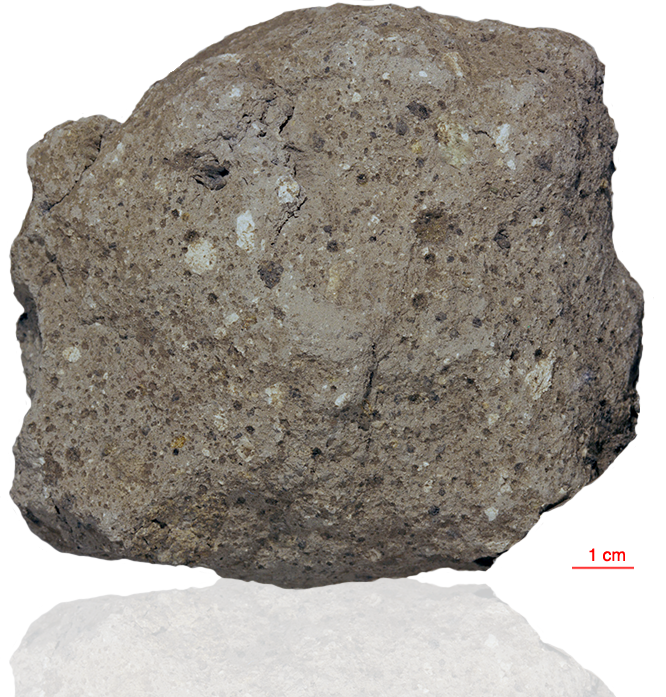
Fact sheet
61175 is a friable, grey fragmental regolith breccia containing a high percentage of glass, with some agglutinate. It also contains a small, but significant, mare component. The matrix has a seriate grain size distribution which is welded together with small glass fragments. Major rock types represented by clasts include extrusive and plutonic igneous rocks, impact melts and fine- and coarse-grained metamorphic rocks (granulites). Minor schreibersite is reported. Our thin section is dominated by a large, moderately shocked anorthosite clast (rotation 1). Rotation 2 shows a granoblastic clast and a relatively undeformed plagioclase clast.
The sample weighed 542.7 grams before analysis and has not been dated.
Further details of this and other Apollo samples are here: http://curator.jsc.nasa.gov/lunar/
The Apollo 16 landing site was in the hilly region around Descartes crater in the lunar highlands. The landing spot was chosen to allow the astronauts to gather geologically older lunar material (Descartes Formation and the Cayley Formation) than the samples obtained in the first four landings, which were in or near lunar maria.
The mission lasted 11.1 days, with a stay on the lunar surface of 71 hours. The crew were on the lunar surface for 20.2 hours during which they traversed approximately 27 kilometers and collected approximately 96 kilograms of samples.
Apollo 16 was launched on 16 April 1972.






